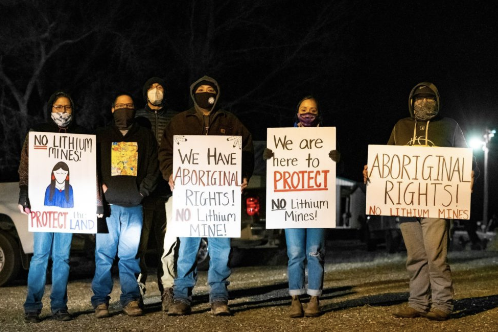Emerging Energy Technologies Part 1: Leading with Equity for a Just Energy Future

If twenty years ago we asked what a clean energy future looks like, a sunny green field with a smattering of windmills and solar panels might have come to mind. Today, it’s much more complicated. Industries are rolling out new technologies with bold claims about how they can save us from climate change, but in reality many of these solutions don’t deliver as advertised or consider the people that are impacted. Even the clean technologies we have embraced, like solar, have profound equity implications.
As the country strives to define and work towards a just clean energy future, how can we ensure the transition does not replicate the same socioeconomic and environmental inequities created by the fossil fuel industry? How can we shape a new energy system that centers and is led by communities of color? One thing is for certain, if we take the same approach to the clean energy transition that we did with industrialization, we’ll end up with the same results; people of color bearing the brunt of the burden in the new clean energy sacrifice zones.
While it is tempting to look to technology for quick climate solutions, many energy technologies, including carbon capture and storage, green hydrogen, and critical mineral mining, still run the risk of perpetuating harm to communities and the environment. Below are four guiding equity principles to consider before advocating for, investing in, or otherwise supporting these emerging technologies. We recommend using the principles to analyze the threats and potential opportunities of some of the latest technologies that have gained a buzz.

Greenwashing: A Tactic for Keeping the Fossil Fuel Industry Alive
The momentum toward clean energy gained steam with the passing of the Infrastructure Investment and Jobs Act and Inflation Reduction Act,directing more than $460B in investments toward local governments, businesses, organizations, and households implementing climate projects. While some of this money has gone towards tax incentives and grants for solar, electric vehicles and capacity building for community organizations, significant funding has also gone towards nascent technologies. This includes $4.9B earmarked for carbon capture and storage or CCS projects from the IRA as well as $9.5B dedicated to development of clean hydrogen initiatives under IIJA.
The IRA also allocates $10B for the Qualifying Advanced Energy Project Credit program (48C) which provides investment tax credits to subsidize building hydrogen technologies, CCS, and critical mineral facilities. However, the danger is that fossil fuel industry players are using these technologies to craft false narratives of environmental good – or “greenwashing” – and continue to support the ongoing sale of fossil fuels.
Greenwashing isn’t a new tactic for the fossil fuel industry. A utility in Washington faces a lawsuit after claiming “Natural gas is a clean, efficient, and reliable energy”. In fact, natural gas disproportionately burdens low-income communities of color with NOx emissions from leakages that cause serious health impacts and pose a safety threat. Fossil fuel companies use this same angle to mislead the public into thinking they are “greening” their companies by promoting carbon capture technologies at their facilities or hydrogen blending into gas pipelines.

One form of CCS known as point source air carbon capture, separates and captures CO2 emissions from fossil fuel-based power generation. The story from the fossil fuel industry claims this form of CCS is an emissions-free way to continue operating existing infrastructure as we transition. However, this narrative leaves out the fact that these technologies have proven to be ineffective at capturing carbon emissions and other harmful pollutants, while being expensive (money that could be going towards constructing proven decarbonization solutions and decommissioning polluting facilities), and potentially dangerous.
Fossil fuel companies also use hydrogen technology to greenwash their operations by proposing that blending hydrogen into existing gas pipelines is more climate-friendly. Whether it is hydrogen produced through renewable energy (aka “green hydrogen”) or not, blending hydrogen into gas pipelines has no merit from an emissions reduction or cost effective perspective, and can actually be a safety risk at high blending percentages. This blatant misrepresentation of the viability of these technologies has, unfortunately, started to slip into policy – a hydrogen blending bill, sponsored by a gas utility company, was introduced in California this year. While this particular bill didn’t make it into law, it was one among several green hydrogen bills introduced with many likely to come in the future.
In line with our second equity principle, legislators and decision-makers should not invest in technologies that prop up fossil fuel industries that are harming our communities.
The Unintended Consequences: Perpetuating Harms to Communities of Color
Beyond contributing to greenwashing, some of these technologies will exacerbate environmental and equity impacts in communities of color. Take green hydrogen, hydrogen that is produced by renewable energy sources through electrolysis and can be used in its elemental form, as a fuel source, or for energy storage. While the concept sounds promising, green hydrogen is a very new industry with 95% of global hydrogen still being produced through fossil fuels. Ensuring green hydrogen can be deployed as an equitable clean energy solution will require meeting a number of criteria for its production, transportation, storage, and end use. In addition, many proposed hydrogen production facilities will be sited in industrial areas, among existing environmental justice communities that have already suffered pollution for decades, so community buy-in for hydrogen projects is essential. The time is now to set parameters for the green hydrogen industry and keep with the third equity principle to return power to the people to decide what types of energy projects can exist in their neighborhoods.
Another factor to consider when assessing the impact of climate technologies on communities is the clean energy supply chain. In recent years, we’ve seen news stories break outlining the horrific human rights violations stemming from the international mining of critical minerals needed to supply America’s growing demand for electronics, electric vehicles, and solar/storage. The international atrocities associated with the clean energy supply chain cannot be understated – from child labor, slave labor, and unsafe working conditions – and it is the responsibility of climate advocates and policymakers to uplift supply chain best practices.
As the U.S. rapidly moves to domesticate its energy supply chain, we must ensure we don’t recreate these atrocities. The IIJA invested $510M to fund critical minerals research to locate more domestic resources; the Department of Defense awarded $35M to a rare earth mining company in California to build the first processing and separation facility in the U.S.; and the development of “Lithium Valley” in California is predicted to be one of the world’s biggest sources for the critical mineral for EV batteries. With the mining and manufacturing industry set to make a return to America, the question of how this will affect communities of color who were the first to lose out in America’s last industrial wave remains unanswered.
An examination of our country’s history with mining shows that communities of color are disproportionately located near polluting industrial sites and their protests against the health risks, environmental damage, and sacrilege to culturally significant sites by this industry have been consistently ignored. Concerningly, this trend seems to be continuing today. 79% of known lithium deposits sit within 35 miles of Native American reservations in the U.S. which should make Tribal communities a vital decision-maker. Unfortunately, community-led decision-making has been sidelined, as illustrated by the federal court’s approval of the Thacker Pass Mine, a lithium mine proposed in Nevada, despite heavy Indigenous opposition. This explicitly contradicts our first and second equity principles of directing benefits to priority populations and avoiding further harm. These must be the considerations we lead with as the country looks to re-open mines and industrial facilities in environmental justice communities. Greenlining’s comments in response to the Defense Production Act looked to center equity with specific recommendations on how the program should consider equity in its goals, process, implementation, and evaluation of developing the domestic clean energy manufacturing industry.

A just clean energy future must be pursued through an equity lens to ensure solutions clearly benefit and do not harm communities of color. There are many equity concerns with emerging technologies like CCS and green hydrogen, but stay tuned for Part 2 of this blog series to continue the discussion on potential equity opportunities with new clean energy technologies in building towards a just clean energy future.




